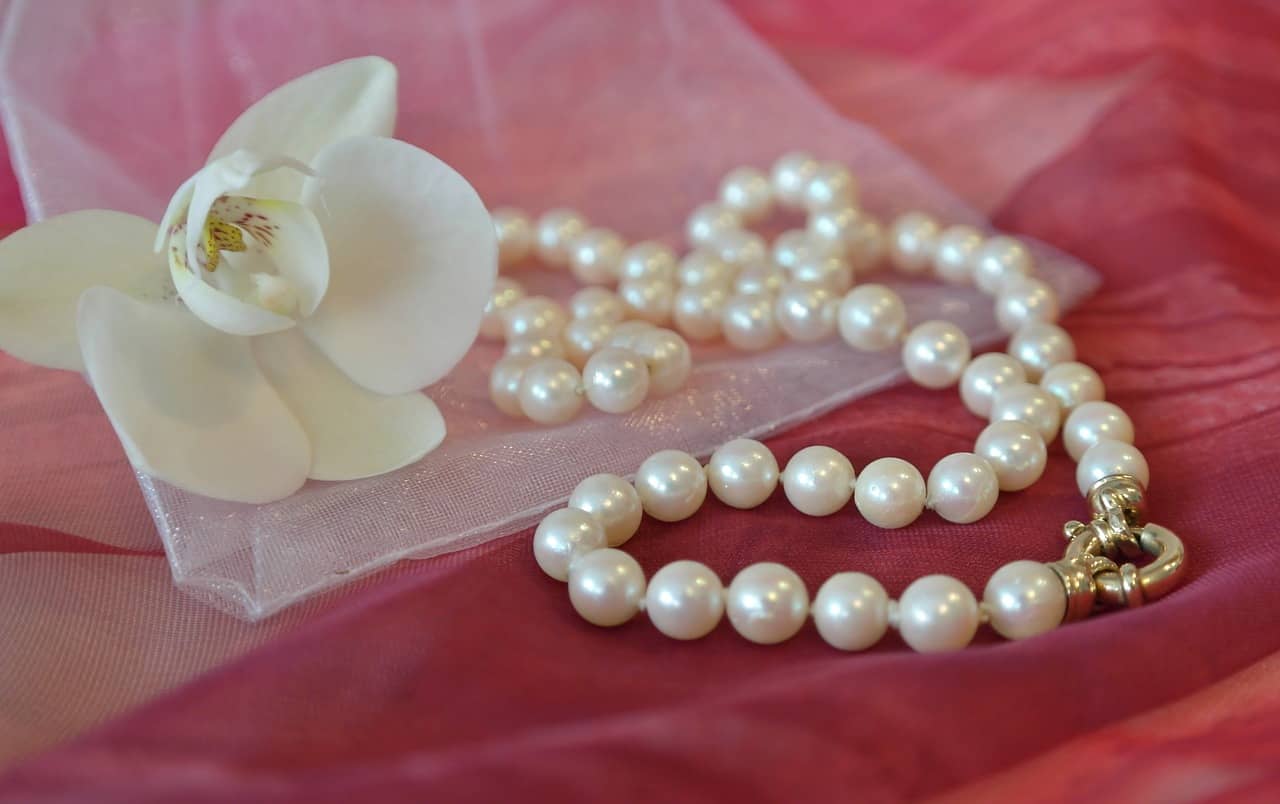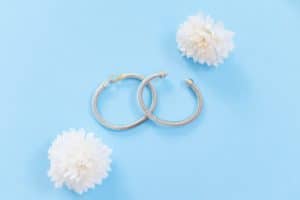Cultured pearls are gorgeous gemstones produced in both saltwater and freshwater. These cultured pearls are natural pearls produced inside real oysters at pearl fields in Australia, Japan, Indonesia, India, China and many more places. Like natural pearls, these cultured pearls are pretty rare, which makes them valuable and high-priced.
While cultured pearls are not as valuable as real pearls that occur naturally, they do hold good value. The actual price and value of cultured pearls depends on a lot of factors like their color, shape, size and luster. Cultured pearls are mostly of the same quality as pearls that occur naturally and this is what makes them valuable. Just like real pearls, cultured pearls can also make for an heirloom piece.
Let’s discuss this in detail!
What are cultured pearls famous for?
Cultured pearls are made by pearl cultivators to maintain the delicate balance of Mother nature while still catering to the demand for pearls in the marketplace.
They are famous because:
- They are natural. Only placement of an irritant is human process. The process of pearl formation is completely natural, and hence considered genuine.
- They are the same quality as natural pearls on the outside
- They are cheaper than natural pearls
- They are more commonly available as they are easier to create and find
- The survival rate of oysters in a controlled environment is much higher. This implies that we can get more number of pearls from the same number of oysters.
- These are much easier to harvest from pearl farms in comparison to diving in the sea.
These cultured pearls are famous worldwide for different uses. Some of them are:
- Making bead necklaces and bracelets.
- Cultured pearls get mounted in gold or diamond base earrings, solitaires, rings, pendants and many more.
- Cultured pearls that are larger are more popular amongst jewelry designers to use a center neckpiece.
There are many different cultured pearls. Among the other cultured pearls, south sea pearls are the most valuable ones in the market.
Are cultured pearls real pearls?
Yes! They are real pearls that are made with human intervention. Usually, pearls are formed when an irritant gets inside the oyster’s delicate membrane accidentally. This irritant, seawater sand or soil, stimulates the oyster’s to produce films of secretions, known as Nacre, that gradually grows into a natural pearl.
Cultured pearls also originate from this same process. Under the cultured pearl production, pearl cultivators insert a drop or a membrane piece as the irritant to stimulate the pearl growth in the oyster.
However, since human intervention in cultured pearl cultivation is limited, these cultured pearls are known as real pearls and have an equivalent worth as natural pearls.
How do you tell if cultured pearls are real?
Due to the widespread popularity of this gemstone, people have started manufacturing fake pearls from materials like glass, plastic or shells that resemble original ones. However, you can readily spot a fake cultured pearl by considering the steps below.
- Touch the pearl to feel the temperature
To identify whether a cultured pearl is genuine or not, take it in your hand and feel its temperature. This is because authentic cultured pearls are cold when touched initially before getting warm from contact with your skin. On the other hand, fake cultured pearls will remain at room temperature and not feel cool initially while touching.
Also, you must note that artificially cultured pearls made up of glass will appear cold when held in hands but will require more time to warm up against your skin.
- Look for some irregularities
Authentic cultured pearls always have some irregularities in their surface that are an indication that these pearls got manufactured from a natural process. Hence if you notice a pearl that is perfectly round and has a smooth surface, it is a possibility that the pearl is probably fake. Also, cultured pearls reflect light differently from artificial pearls, and they are less glossy than fake ones.
- Check its color
Cultured pearls are usually overtone and have a translucent shade that develops on the exterior surface. It is pretty prominent among good-quality pearls. Also, in a genuine cultured pearl, you will notice a hint of red and green over the primary pearl color. However, if you see only one standard shade that lacks depth, they are possibly fake pearls.
- Examine the weight and look for drill holes
Natural and genuine cultured pearls are usually heavier than fake pearls. Hence to identify whether a cultured pearl is real or not, examine the weight of your pearl. Moreover, the drill holes in genuine cultured pearls are smaller in size compared to fake ones. So when finding out if a cultured pearl is authentic or not, inspect the drill holes on the pearls.
- Hydrochloric Acid Test
Real pearl would dissolve in hydrochloric acid and fake pearl would not.
- Drop test
I noticed this when a pearl from my ring dropped on it’s own. Real pearl will bounce back to a good height when dropped on the floor while fake pearls will not bounce as much.

Are cultured pearls worth anything?
Even when cultured pearls get manufactured using the manual farm technique, they are known as real pearls and hold a tremendous value in the jewelry market. These cultured pearls come in different varieties and carry a worth ranging between $50 to more than $165,000. This worth of cultured pearls depends on factors, such as pearl type, surface quality, lustre, size, shape and many more.
How much are cultured pearls worth?
Mentioned hereunder are different types of cultured pearls and their price value.
Type of cultured pearls | Worth (In USD) |
Tahitian Pearls | Cultured Tahitian pearls range between $500 to $25,000. |
South Sea Pearls | Cultured South Sea pearls range between $1,000 to $100,000 |
Akoya Pearls | Cultured Akoya pearls range between $300 to $10,000 |
Freshwater Pearls | Cultured Freshwater pearls range between $50 to $2,000 |
Do cultured pearls increase in value?
The value or worth of a cultured pearl depends on various factors, including its size, shape, lustre, texture and many more. However, unlike gold or diamond, pearls rarely increase in value. Hence if you have pearl jewelry, the odds of it increasing its worth is pretty low.
Nevertheless, you must note that pearls never lose their value. This means that if you keep your cultured pearl gemstones in good condition by exercising appropriate safety measures, you may get a good resale value if you market them.
Are cultured pearls durable?
It depends on the handling. Pearls, either cultured or natural need to be maintained in order for them to be durable. When speaking of cultured pearls durability, these pearls hold a rank of 2.5 on the Mohs Hardness Scale that implies that cultured pearls are soft and quickly get scratches. Hence it might not be wrong to say that these cultured pearls are not the most durable gemstones and must get handled correctly.
While these peals won’t shatter right away, they can start developing cracks or become dry if you do not store them accurately or don’t wear them for a long time. Therefore, to increase the durability of your cultured pearls, it is advisable to keep them in a place where they get adequate moisture or wear them often so they can absorb the natural oils from your skin to remain moisturized.
Also, to protect your cultured pearls from wearing out fast, keep them away from all the chemicals such as your cosmetics, perfumes etc. and do not forget to clean your cultured pearls regularly.
Can cultured pearls be restored?
Yes, however it depends on the extent and type of damage. All the natural and cultured pearls gradually lose their shine after some time and start turning yellow due to their natural ageing process. This makes many people look for ways to restore the shine and luster of their cultured pearls.
Also, many people wonder whether they can restore their cultured pearls or not. However, if your pearls are also losing their shine and turning yellow, you can revive their natural shine with some easy steps below.
- Fill a bowl with lukewarm water. Put some drops of mild cleanser into the water and stir the water and soap thoroughly.
- Soak a soft cloth into the soapy liquid and wash the pearls with foamy water.
- Take out your cultured pearls from the soap water solutions after some time and clean them thoroughly with a fresh dry cloth. Ensure that you remove all the soap residue as if not cleaned accurately, it can damage your pearls.
- Once your pearls get dried completely, put a small amount of jojoba olive oil on your pearls to help them remain moisturized and prevent them from drying.
Note:
Never clean your cultured pearls with a standard jewelry cleaner, as they can carry ammonia. Alternatively, look for a washing solution that is suited for precious gemstones. Apart from this, you should never place your cultured pearls in an electronic jewelry cleaner as the ultrasonic rays will damage the pearl and cause scratches.
Are old cultured pearls valuable?
Cultured pearls, created using pearl farming techniques, are equally valuable as natural pearls. Apart from this, several old cultured pearls are presently ruling the market and fetching higher rates. Some of the most common old cultured pearls include South Sea pearls, Tahitian pearls and Akoya pearls.
These old cultured pearls are still the most valuable in the present times, and their prices depend on various factors that include:
- Pearl Cast
- Pearl Form
- Pearl Size
- Pearl Type
- Pearl Radiance
- Pearl Surface condition
Conclusion
To summarize, we can say that Pearl is one such popular gemstone that existed in human civilization from time immemorial and is still going strong given its positive effects and benefits. Also, apart from natural pearls, cultured pearls have become highly prevalent in modern times, and many people are opting for cultured pearls.
However, before purchasing these cultured pearls, you must readily identify whether the pearl is genuine or not and store them accurately to ensure that you get better value for money. Also, when kept accurately, your cultured pearls can last for a lifetime, and you can pass them on to next generations.




